In this article, we will be covering Polygon ZKEVM, the L2 solution responsible for the scaling of the Ethereum Virtual Machine, and how it operates and manages to do this.
Introduction
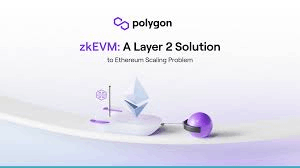
Polygon ZKEVM is an L2 scaling solution for the Ethereum blockchain leveraging ZK proofs to enhance scalability while maintaining the security and compatibility of the Ethereum Virtual machine and has been designed to offer a significant boost in transaction throughput and efficiency.
The purpose of Polygon zkEVM is to address the scalability challenges faced by the Ethereum network by providing a solution that is fully compatible with Ethereum's existing ecosystem. This compatibility ensures that most Ethereum smart contracts, developer tools, and wallets can work seamlessly on Polygon zkEVM, offering developers the ability to deploy their existing Ethereum smart contracts without changes. The use of ZK proofs allows for secure and private transactions, making it particularly appealing for decentralized finance (DeFi), non-fungible tokens (NFTs), and payment applications.
Polygon zkEVM achieves its scalability through the use of zero-knowledge rollups, which bundle multiple transactions into a single proof. This method significantly increases transaction throughput, enabling the network to process transactions at scales much larger than Ethereum's mainnet capacity. By processing transactions off-chain and verifying them in a single batch on-chain, Polygon zkEVM reduces gas costs and transaction fees, making it a cost-effective solution for high-value applications like DeFi.
How does Polygon ZKEVM Shape up against Normal EVM?
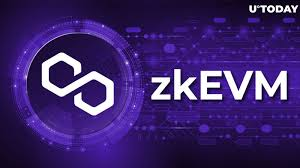
Polygon zkEVM is built to ensure that developers are able to deploy their Ethereum-based applications on it without having to perform any re-writes and it maintains full cross-compatibility with the EVM and Polygon plans on soon making the developer tools currently on Ethereum work well with the Polygon zkEVM.
One of the key advantages of Polygon zkEVM is its ability to offer the speed of zk-rollups while preserving the familiarity and functionality of the EVM. This means that developers and users can experience an almost identical environment to Ethereum L1 but with significant improvements in speed and cost. By executing EVM bytecode directly, Polygon zkEVM ensures that there is no interface between the zkEVM and the EVM, contributing to its EVM equivalence.
In summary, Polygon zkEVM represents a monumental advancement in blockchain technology, offering a highly scalable and secure solution that not only maintains compatibility and equivalence with the Ethereum Virtual Machine but also provides improved speed, cost, and functionality compared to the normal EVM.
Why Should You Care?
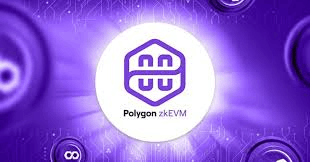
Polygon zkEVM brings several key advantages to the table that Ethereum's traditional EVM does not have. These advantages primarily revolve around scalability, cost-efficiency, and improved functionality.
Scalability and Throughput
One of the most significant advantages of Polygon zkEVM over the traditional EVM is its scalability. By leveraging zero-knowledge (ZK) proofs, Polygon zkEVM aims to significantly reduce transaction costs and drastically increase throughput. This means that the network can handle a much larger number of transactions per second compared to the traditional EVM, addressing one of the major limitations of Ethereum's current infrastructure.
Reduced Transaction Costs
Polygon zkEVM's implementation of ZK proofs also leads to reduced transaction costs. This is a crucial advantage as high gas fees on the Ethereum network have been a point of concern for users and developers. By lowering transaction costs, Polygon zkEVM makes it more economically viable for users to interact with decentralized applications and execute transactions on the network.
EVM Equivalence with Improved Speed
While maintaining compatibility with the EVM, Polygon zkEVM offers the speed of zk-rollups while preserving the familiarity and functionality of the EVM. This means that developers and users can experience an almost identical environment to Ethereum but with significant improvements in speed and cost. The direct execution of EVM bytecode on Polygon zkEVM ensures that there is no interface between the zkEVM and the EVM, contributing to its EVM equivalence.
In summary, Polygon zkEVM's key advantages over the traditional EVM lie in its scalability, reduced transaction costs, and improved speed, making it a compelling solution for developers and users looking to overcome the limitations of Ethereum's current infrastructure.
Architecture

The architecture of Polygon zkEVM is a groundbreaking solution that addresses the scalability challenges faced by Ethereum, while also enhancing security and reducing transaction costs. Let's delve into the key aspects of its architecture and what makes it stand out.
Zero-Knowledge Proofs and Scalability
Polygon zkEVM's architecture leverages zero-knowledge (ZK) proofs to significantly reduce transaction costs and increase throughput. By utilizing ZK proofs, Polygon zkEVM is able to validate the correctness of transactions without revealing the underlying data, thereby enhancing privacy and scalability. This approach stands out as a major advancement in blockchain architecture, as it enables the network to handle a much larger number of transactions per second compared to the traditional Ethereum Virtual Machine (EVM).
EVM Equivalence and Compatibility
A standout feature of Polygon zkEVM's architecture is its equivalence with the Ethereum Virtual Machine (EVM). This means that most applications, tools, and infrastructure built on Ethereum can be seamlessly ported over to Polygon zkEVM with limited to no changes needed. This compatibility ensures that developers can deploy Ethereum-based applications on the scaled environment without requiring extensive code adjustments, making it a highly attractive solution for Ethereum developers.
Security and Functionality
The architecture of Polygon zkEVM incorporates robust security measures to ensure the integrity of transactions and smart contracts. By maintaining compatibility with the EVM, Polygon zkEVM offers the speed of zk-rollups while preserving the familiarity and functionality of the EVM. This means that developers and users can experience an almost identical environment to Ethereum L1 but with significant improvements in speed and cost. The direct execution of EVM bytecode on Polygon zkEVM ensures that there is no interface between the zkEVM and the EVM, contributing to its EVM equivalence.
In summary, the architecture of Polygon zkEVM stands out due to its innovative use of zero-knowledge proofs for scalability, its equivalence with the Ethereum Virtual Machine, and its focus on maintaining compatibility while significantly improving speed, cost, and functionality compared to the normal EVM.
Where does Polygon zkEVM lie amongst its competitors?
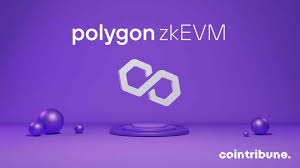
Polygon zkEVM has created a mark for itself in the realm of Ethereum layer 2 scaling solutions, particularly those utilizing zk-rollups and aiming for EVM equivalence. Here's a breakdown of how it compares to its key competitors:
Competitors:
-
Scroll zkEVM: Similar to Polygon zkEVM, Scroll is building an EVM-equivalent zk-rollup solution. Both projects aim for seamless compatibility with existing Ethereum smart contracts. However, Scroll is currently in a private testnet phase compared to Polygon zkEVM's launched mainnet.
-
zkSync Era: Unlike Polygon zkEVM's focus on EVM equivalence, zkSync Era prioritizes EVM compatibility. This means there might be some adjustments needed for existing smart contracts to run flawlessly on zkSync Era. However, zkSync Era boasts a live mainnet compared to Polygon zkEVM's status (as of April 2024).
-
StarkNet: While not directly an EVM-focused solution, StarkNet is another prominent zk-rollup player offering high scalability and security. However, it utilizes its own custom language (Cairo) instead of EVM compatibility, requiring developers to rewrite smart contracts for StarkNet.
Polygon zkEVM's Advantages:
-
EVM Equivalence: Existing Ethereum developers can readily deploy their smart contracts on Polygon zkEVM without modifications, potentially accelerating adoption.
-
Launched Mainnet: Compared to some competitors still in the testnet phases, Polygon zkEVM offers a readily available solution for developers.
Polygon zkEVM's Considerations:
-
Newer Technology: As a recently launched mainnet solution, Polygon zkEVM might require more time to mature and undergo security audits compared to established competitors.
-
Competition: The zk-rollup space is rapidly evolving, and other projects might offer advancements in specific areas like transaction speed or specific functionalities.
Overall, Polygon zkEVM presents a compelling option for developers seeking a familiar EVM environment with the benefits of zk-rollups. However, it's crucial to stay updated on the evolving landscape and consider the maturity and specific features offered by competing solutions.
Use Cases for Polygon ZKEVM

Polygon zk-EVM's ability to provide fast, secure, and cost-effective transactions unlocks a range of exciting use cases, particularly for applications struggling with high fees and slow transaction times on the Ethereum mainnet. Here's how it can benefit various sectors:
- Decentralized Finance (DeFi):
DeFi protocols rely heavily on frequent transactions, making them susceptible to high gas fees on Ethereum. zk-EVM's low transaction fees enable faster and more affordable lending, borrowing, and trading within DeFi applications. This can lead to increased user adoption and participation in the DeFi ecosystem.
- Non-Fungible Tokens (NFTs):
The popularity of NFTs has resulted in congested networks and expensive minting fees. zk-EVM's scalability allows for smoother NFT minting, trading, and gameplay within NFT-based games. This can foster a more vibrant NFT marketplace with faster transactions and lower costs for users.
- Gaming:
Blockchain-based games often require real-time microtransactions, which are currently impractical on Ethereum due to high fees and slow confirmations. zk-EVM's near-instantaneous transactions and minimal fees enable a seamless gaming experience with smooth in-game purchases and asset transfers.
- Social Scalability:
Social applications built on Ethereum can leverage zk-EVM to achieve faster and cheaper content creation, sharing, and micropayments. This can facilitate smoother user interactions and encourage wider adoption of decentralized social media platforms.
- Supply Chain Management:
zk-EVM can be used to track the movement of goods within complex supply chains in a secure and verifiable manner. The low transaction fees allow for frequent updates and real-time tracking, enhancing transparency and efficiency within supply chains.
- Benefits for Ethereum-based Projects:
zk-EVM offers a bridge for existing Ethereum projects to scale their applications without sacrificing security or having to rewrite their codebase. By migrating to zk-EVM, projects can benefit from faster transactions, lower fees, and potentially reach a wider user base.
Overall, Polygon zk-EVM presents a compelling solution for scaling Ethereum and unlocking the true potential of decentralized applications across various sectors. Its ability to combine scalability with security paves the way for a more efficient and user-friendly Ethereum ecosystem.
Polygon zkEVM: Adoption on the Rise, Future Looks Bright
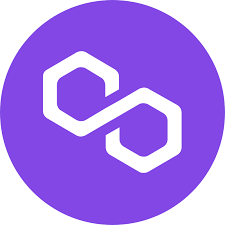
While Polygon zkEVM is a relatively new player in the scene (having launched its mainnet potentially in late 2023 or early 2024), it's already making strides in adoption and holds immense promise for the future. Here's a closer look:
Current Adoption:
-
There are positive signs of adoption, with established DeFi projects like Aave, LugaNodes, and SushiSwap integrating with Polygon zkEVM to offer their services with significantly reduced transaction fees.
-
This demonstrates the growing interest from prominent players in the DeFi space seeking to leverage zkEVM's scalability benefits.
Future Outlook:
-
The potential for future growth is significant. As zk-roll-up technology matures and gains wider acceptance, Polygon zkEVM is well-positioned to benefit due to its:
-
EVM Equivalence: Existing developers can easily migrate their applications, fostering faster adoption.
-
Launched Mainnet: Provides a readily available solution for developers compared to competitors still in testing phases.
-
Continued development and integration with established projects and wallets can further accelerate adoption.
Partnerships and Projects:
-
Polygon has actively pursued partnerships to expand the zkEVM ecosystem with companies like Immutable, Covalent, Zeeve, Celer Partners, and more.
-
DeFi leaders like Aave, Curve Finance, and SushiSwap integrating with zkEVM showcase its potential for real-world use cases.
Overall, Polygon zkEVM's recent launch, coupled with its focus on EVM compatibility and partnerships, positions it favorably for future growth. Continued development, security audits, and wider adoption from DeFi and other sectors will be crucial for solidifying its place in the evolving landscape of Ethereum scaling solutions.
Community and Governance
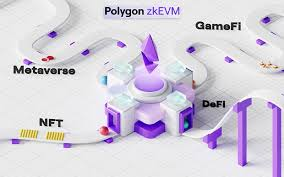
The Polygon zkEVM is a part of the larger Polygon Blockchain ecosystem and community as a whole, here's the details about them.
Polygon Ecosystem Community:
-
Polygon fosters a vibrant community through various channels:
-
Forums: The Polygon website offers forums for discussions and collaboration across the Polygon ecosystem, including potential discussions relevant to zkEVM.
-
Discord: Polygon has active Discord servers where developers, users, and enthusiasts can interact and exchange ideas. Specific channels dedicated to zkEVM developments might exist.
-
Social Media: Following Polygon's social media channels can keep you updated on zkEVM developments and potential community discussions.
Potential zkEVM Governance:
-
Given Polygon's emphasis on community governance for the wider ecosystem, it's reasonable to expect a similar approach for zkEVM in the future.
-
Polygon Improvement Proposals (PIPs) might be a framework for proposing and implementing changes related to zkEVM.
Here's what you can do to stay informed:
-
Explore the Polygon community channels mentioned above and search for discussions specifically related to zkEVM.
-
Look for updates on the Polygon website and social media regarding zkEVM governance or community initiatives.
-
As zkEVM matures, keep an eye out for announcements about dedicated governance mechanisms or community forums.
Remember, the zkEVM space is constantly evolving. While a distinct zkEVM community and governance model might not be fully established yet, staying engaged with the broader Polygon ecosystem can provide valuable insights into potential future developments.
Challenges and Limitations

While Polygon zkEVM offers a promising solution for scaling Ethereum, it's essential to acknowledge the challenges and limitations it currently faces:
- Technological Maturity:
Being a relatively new technology (launched potentially in late 2023 or early 2024), zk-EVM is still undergoing development and requires further testing and security audits.
Compared to established layer 2 solutions, Polygon zkEVM might have a shorter track record in terms of proven security and stability.
- Complexity of zk-SNARKs:
The zk-SNARKs employed by Polygon zkEVM are complex cryptographic constructs. Integrating them adds an additional layer of complexity to the system.
This complexity can make development and debugging more challenging compared to simpler scaling solutions.
- Limited Transaction Types:
While zk-EVM strives for EVM equivalence, there might be specific edge cases or complex transaction types that aren't yet fully supported.
Developers should be aware of these limitations and ensure their applications function as intended within the capabilities of zkEVM.
- Centralization Concerns:
As with any roll-up solution, the sequencer in Polygon zkEVM plays a crucial role in collecting and preparing transactions for inclusion in the zk-SNARK.
While the sequencer is planned to become decentralized in the future, its current centralized nature raises concerns about potential censorship or manipulation.
- User Adoption:
Despite its advantages, zk-EVM technology is still relatively new. Widespread user adoption and trust in this novel approach might take time to develop.
Existing DeFi protocols and users might be hesitant to migrate entirely to a new scaling solution until its stability and security are thoroughly proven.
- Evolving Landscape:
The blockchain scalability space is rapidly evolving, with multiple competing solutions like Optimistic Rollups and other zk-rollup projects under development.
Polygon zkEVM needs to continuously innovate and adapt to stay competitive in this dynamic landscape.
Despite these challenges, Polygon zkEVM represents a significant leap forward in Ethereum scalability. Its focus on EVM equivalence and the growing adoption by DeFi projects position it as a strong contender in the race to solve Ethereum's scaling woes. As the technology matures, undergoes rigorous audits, and the zk-rollup space evolves, Polygon zkEVM has the potential to become a cornerstone for a more scalable and user-friendly Ethereum ecosystem. The future of blockchain scalability is bright, and Polygon zkEVM is at the forefront of this exciting revolution.
Conclusion
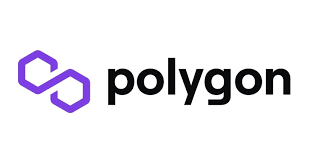
Polygon zkEVM represents a significant milestone in Ethereum's journey towards scalability. While challenges remain, its innovative approach and focus on EVM compatibility position it as a powerful contender for the future of Ethereum transactions. As zk-proof technology matures, security audits solidify trust, and the zk-rollup landscape flourishes, Polygon zkEVM has the potential to become a foundational element of a more scalable and accessible Ethereum ecosystem.
This blog has merely scratched the surface of Polygon zkEVM's potential. The coming years promise exciting developments, from technical deep dives into zk-SNARK specifics to real-world use cases showcasing the transformative power of zk-rollups. By staying informed and engaged with the vibrant Polygon zkEVM community, you can be a part of shaping the future of blockchain scalability.




评论 (0)